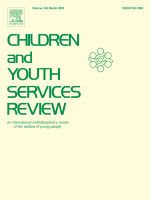Abstract:
Child mental health practitioners and advocates have raised concerns about the use of group homes for youth with mental and behavioral health concerns. However, little is known about what factors contribute to the tremendous variation in youth outcomes following group home care. The current study draws from a large-scale, quasi-experimental, NIMH-funded study of group homes in a southeastern state. This study uses data from interviews with guardians, youth, and group home staff to understand the experiences of 554 diverse youth staying in 44 group homes across 14 agencies. Pre- and post-behavioral and mental health outcomes were measured using the Strengths and Difficulties Questionnaire. Youth were asked to assess staff caring, fairness, pleasantness, and teaching as well as overall group home safety.
Youth behavioral and mental health improved between admission and discharge. Most youth felt that staff were certainly fair, caring, pleasant, and teaching them things. A small but meaningful portion of children reported feeling unsafe. Youth perception of the staff as caring and fair and the group home as safe in their first interview significantly predicted improved behavioral and mental health at discharge. To date this is the only study examining youth’s prospective assessment of group home treatment quality on their later treatment outcomes. Along with the broader literature, these findings imply that building trusting, safe relationships with youth should be a top priority and suggests youth perspectives should be a valuable part of staff and safety assessments.

